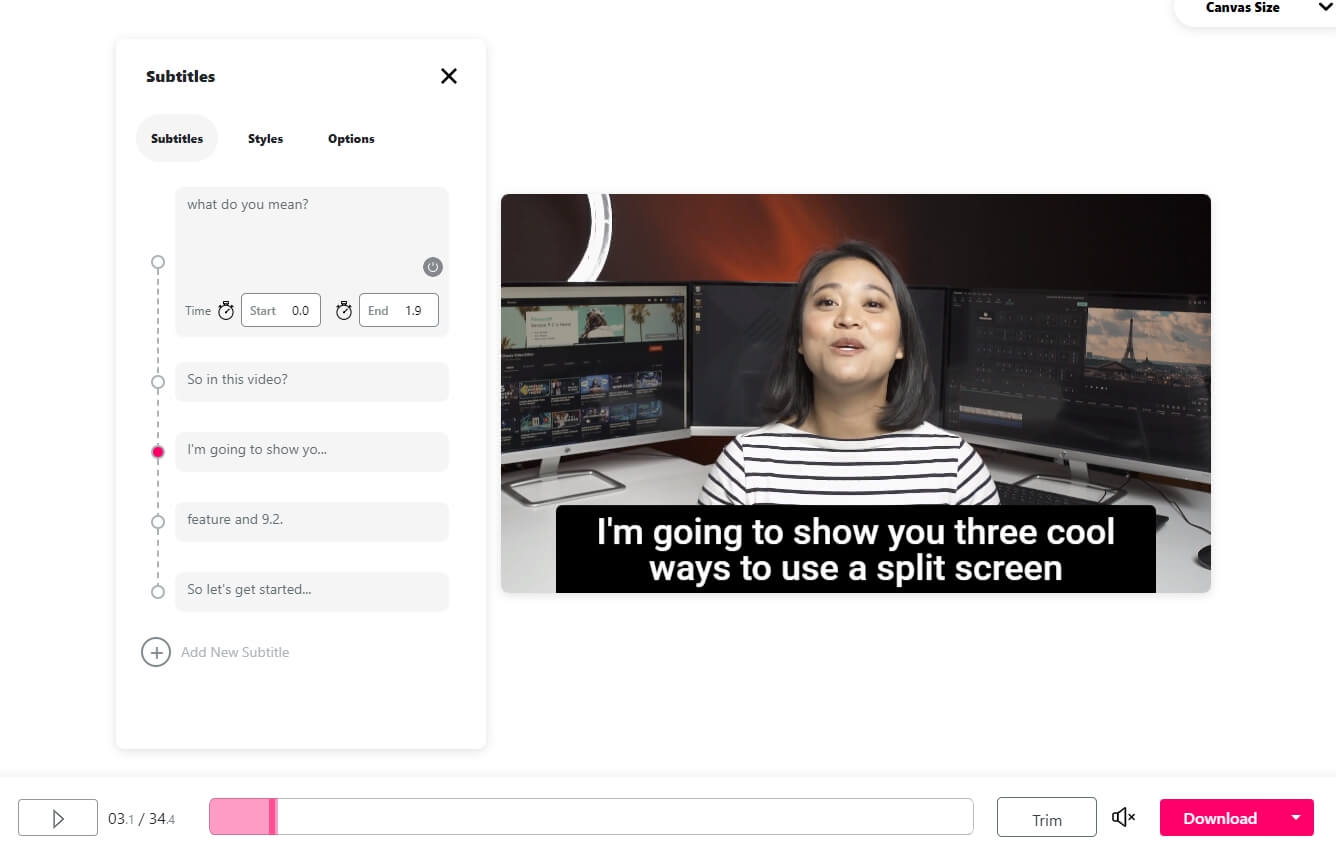

- How to add closed captioning to a video pdf#
- How to add closed captioning to a video manual#
- How to add closed captioning to a video download#
It is slightly more integrated with YouTube than the others, and features a convenient export tool which allows you to e-mail the captions to a video’s owner (if you’re captioning for someone else) or download a.
CaptionTube The latest CIY tool, CaptionTube has a clean (and simple) user interface and multi-language capability similar to many of the other resources identified below. Captioning is essential for children who are deaf and hard of hearing, can be very beneficial to those learning English as a second language, can help those with reading and literacy problems, and can help those who are learning to read. Students often need assistance in learning content-relevant vocabulary (in biology, history, literature, and other subjects), and with captions they see both the terminology (printed word) and the visual image. Captions provide missing information for individuals who have difficulty processing speech and auditory components of the visual media (regardless of whether this difficulty is due to a hearing loss or a cognitive delay). Reading is a skill that requires practice, and practice in reading captions is practice with authentic text. Children who have a positive experience in reading will want to read reading captions provides such an experience. Captioning has been related to higher comprehension skills when compared to viewers watching the same media without captions. Pre-readers, by becoming familiar with captions, will have familiar signposts when they begin reading print-based material. Captions can help children establish a systematic link between the written word and the spoken word. Reading captions motivates viewers to read more and read more often. Captions help children with word identification, meaning, acquisition, and retention. You can also type your search terms into the YouTube search bar, followed by a comma and the letters cc (e.g. To limit a YouTube search to captioned videos only, perform a search as usual, and then click Filter (upper right), and under Features, click Subtitles/CC. However, this does not guarantee the quality of the captions. Once the captioning file is available, review the timing to ensure accuracy, and click Publish.Ĭaptioned videos are identifed with CC. This automatically aligns the timings of your transcript to your video within YouTube. To synchronize it with the video, click Set timings. Your transcript text will appear alongside the video. Select Transcript file type and click Browse. YouTube can automatically synchronize your transcript with the video to create a caption file. Transcript files only contain text, and are saved as plain text files (.txt). Preview the captions in the editor and make any necessary edits, then click Publish. Select Subtitles file type and click Browse. Uploading a Caption FileĬaption files contain both text and time codes. 
If you already have a transcript or caption file, we recommend simply uploading that file to YouTube. You can then Add new subtitles or CC as you wish.At the upper right, click Unpublish and then Delete draft.Under the Subtitles/CC tab, select the original automatic caption file.Click Publish, and a new English caption track will be created.Repeat these steps until you are satisfed with the captions.If desired, click the Add below (+) or Remove (×) icons to add or remove caption segments.If needed, you can alter the timing by changing the timecode values, or by clicking and dragging the vertical dividers below the video.Select the line that needs repair in the captioning editor text box, and make the edits. To edit captions, click the Edit button (upper right).You will probably need to add punctuation to separate sentences. Test the captions for accuracy by playing the video and observing the captions.Click the English (Automatic) option if available.
How to add closed captioning to a video manual#
Even when recorded under optimal conditions, though, most videos need some manual edits to ensure accuracy.Įditing Automatic Captions Generating Captions

Results are best when the audio is clear, the speaker’s voice is distinct, and ambient noise is minimized. Using speech recognition technology, YouTube can generate captions automatically for videos in English, Dutch, French, German, Italian, Japanese, Korean, Portuguese, Russian, or Spanish. If so, Published: English (Automatic) (or the language of your video) will appear to the right of your video. YouTube may have already auto-captioned your video.Click the Subtitles/CC tab at the top of the page.Go to the Video Manager and click the Edit button for the video you want to caption.You can add and edit captions for videos owned by your YouTube account. Using the Video Manager (Content Creator 2018)

How to add closed captioning to a video pdf#
This resource is designed to be printed as a one page PDF file.








 0 kommentar(er)
0 kommentar(er)
